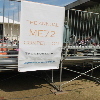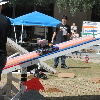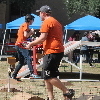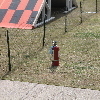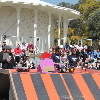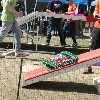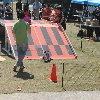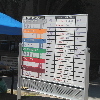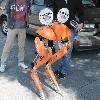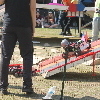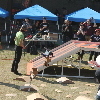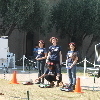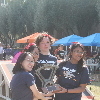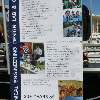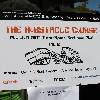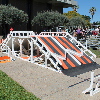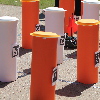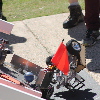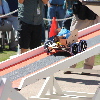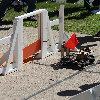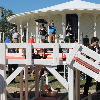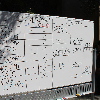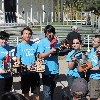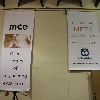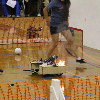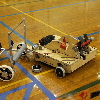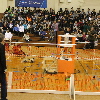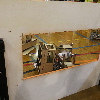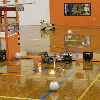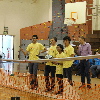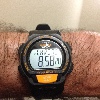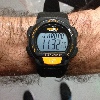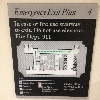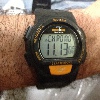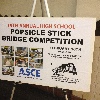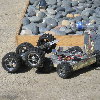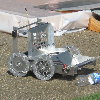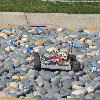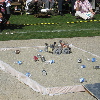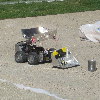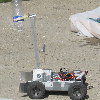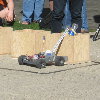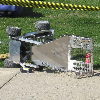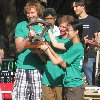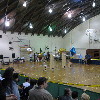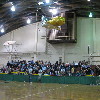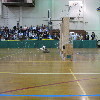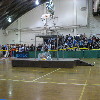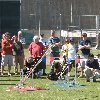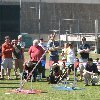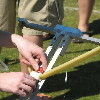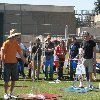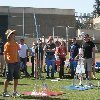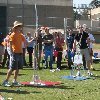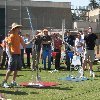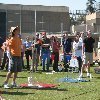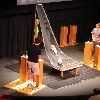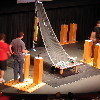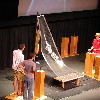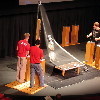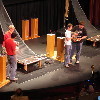It’s Thursday evening, and time to torture myself on the stairs some more.
Tonight I wanted to try a new experiment for handling the middle section of stairs from 24 to 44. Because the floors are 22 steps each, doing double steps leads to an unbalanced pattern, where one leg is doing six doubles and the other is only doing five. In the past, I’ve tried both switching off which leg starts each floor, and also doing one single step at the beginning and the end of each floor. With the single-step strategy, I was able to do a pivot turn without an extra step on the landing, but because the landing is wide, I still ended up losing a fraction of a second on each landing due to the stretch. And doing doubles and switching which leg leads makes a balanced pattern at the cost of adding one extra step per floor. So tonight I wanted to try going with the unbalanced pattern and just adding the extra step to switch sides once every five floors. On the other two sections of stairs I’ve been switching off which leg does the extra work every five floors, and that’s worked well. So I figured doing this on the middle section would be balanced enough and still eliminate unnecessary steps.
I was on schedule all the way to 22, and I had a look at my watch at 24. But at that point I kind of lost track. I was keeping track of five floors at a time to decide when to switch which leg led off, and at the same time I was trying to keep track of six floor chunks to see if I was doing them in one minute according to plan. And it got to be too much. So I just gave up on the timekeeping and concentrated on trying to maintain my pace. And it worked well. I think the ‘switch legs every five floors’ strategy is a winner.
At 44, I took a quick look at my watch with the aim of seeing if I made it to 50 in one minute. And when I got to 50, I’d made the one minute target, and it was just a few seconds after eight minutes in. At that point, I knew I had a shot at beating my best time of 8:58. So I ramped up the pace for the last five floors. And when I heaved up onto the landing at 55, I had 8:58. Again. Still, I can’t complain. Last year, when we were climbing up to 60, I did 9:48, but I was only able to do that once. Oddly enough, that was on Valentine’s Day, too. That I’ve managed to do 8:58 twice is a good thing. Maybe next time I can beat it.
After a few minutes of rest, I headed back down to start up again. The second time up, my goal was just to follow the step pattern and try to go up non-stop. When I got to about 39, I could hear someone coming up behind me. I looked over the side and saw that it was Veronica, and as usual, she was moving fast. So I put on a little burst of speed just so I could make it to 44 ahead of her. Then I was able to hold open the two fire doors for her so she could go faster. Then I just sort of cruised up the last 11 floors to the top, and I was pleasantly surprised that I had made it up in 11:32. That’s not bad for a second time, especially when I’d gone fast the first time.
I went back to the bottom and hung around there talking for a while. I wasn’t sure I wanted to got up again. I was sort of hoping Amber and her entourage would show up and I could walk up with them. But they weren’t there tonight. So I finally just decided to do it.. Again, I was just sort of cruising. I was hoping to do about 12-12.5 seconds per floor, and I managed to get close to that. And when I got near the top, I could hear someone ahead of me. Leland had started up a little ahead of me, and I was catching up to him. So that gave me a little boost, and I picked up the pace for the last 10 floors to see if I could catch him. I didn’t catch up before the top, but I came close. And I did 11:14, which is really remarkable. I don’t think I’ve ever done a third climb that was faster than the second.
So all in all, it was a good evening in the stairwell. And on the way home, I saw a sign that they are having the popsicle stick bridge competition at Union Station on Saturday. I think I may have to ride down there to see it. I like seeing engineering contests.
